Blog
Kirthana Pisipati, our talented Grizzly Corp Fellow for service year 2024/25, wrote a wonderful piece about the importance of representative signage in demonstration gardens. To read, follow this link.
In February 2024, our RCD hosted the National Association of Conservation Districts annual conference with several field days hosted by regional experts, service days and youth education field trips.




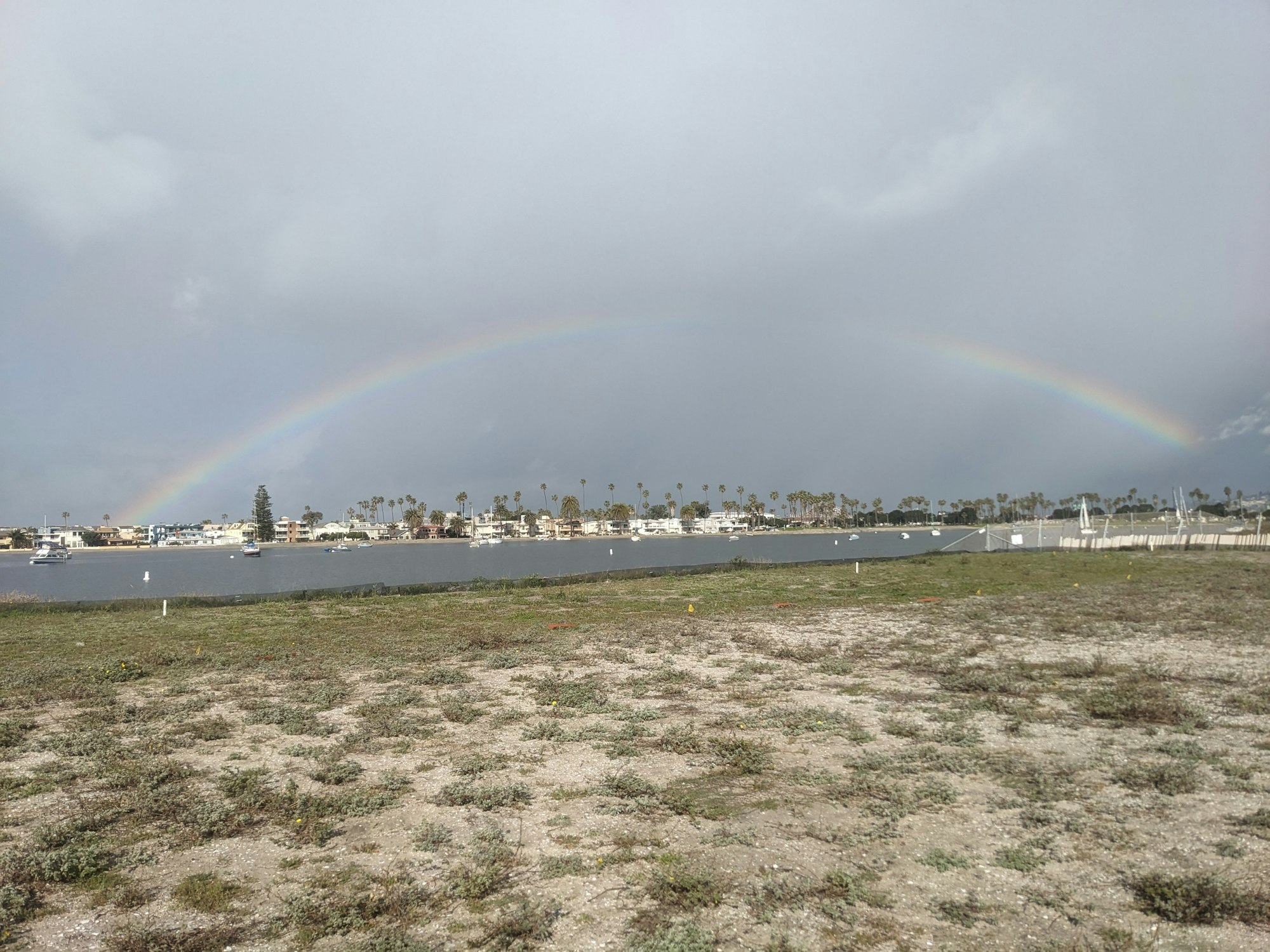







The La Jolla Indian campground, and surrounding communities, have been devastated by the Goldspotted Oak Borer Beetle (GSOB). GSOB is an invasive pest that devastates San Diego’s native oak species and was brought to our corner of Southern California on firewood from Arizona. The La Jolla tribe has used funds from the Department of Conservation’s Regional Forest and Fire Capacity Program through the Resource Conservation District of Greater San Diego County to combat GSOB and remove many dead and dying oak trees from the campground. Now, as a part of their oak woodland reforestation efforts, the La Jolla Band of Luiseño Indians Natural Resource Program Director, Joelene Tamm, and her team, asked if we would like to join them in planting oak trees throughout the campground.
A field day is always a great day and driving to the campground was gorgeous! Arriving at the office, we met with the team to review the project plans. There were about fifty Coast Live Oak and Englemann Oak saplings in the back of the truck that we would be planting. Each tree was grown from acorns collected on the La Jolla reservation, that were then propagated at San Diego State University and returned. A few of the plants came from various reservations and about a dozen from our partners at San Diego Gas and Electric.
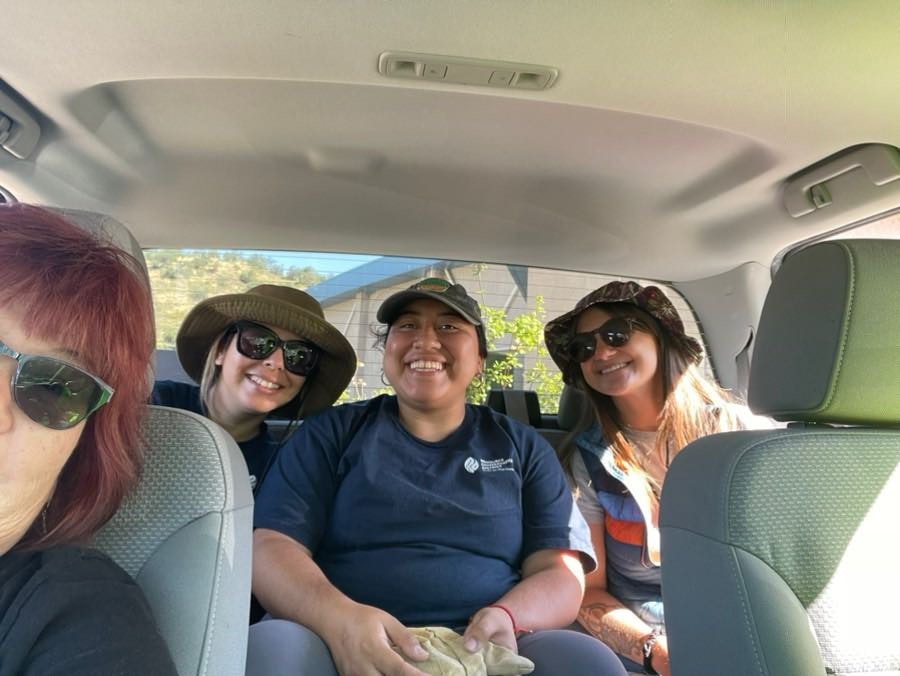

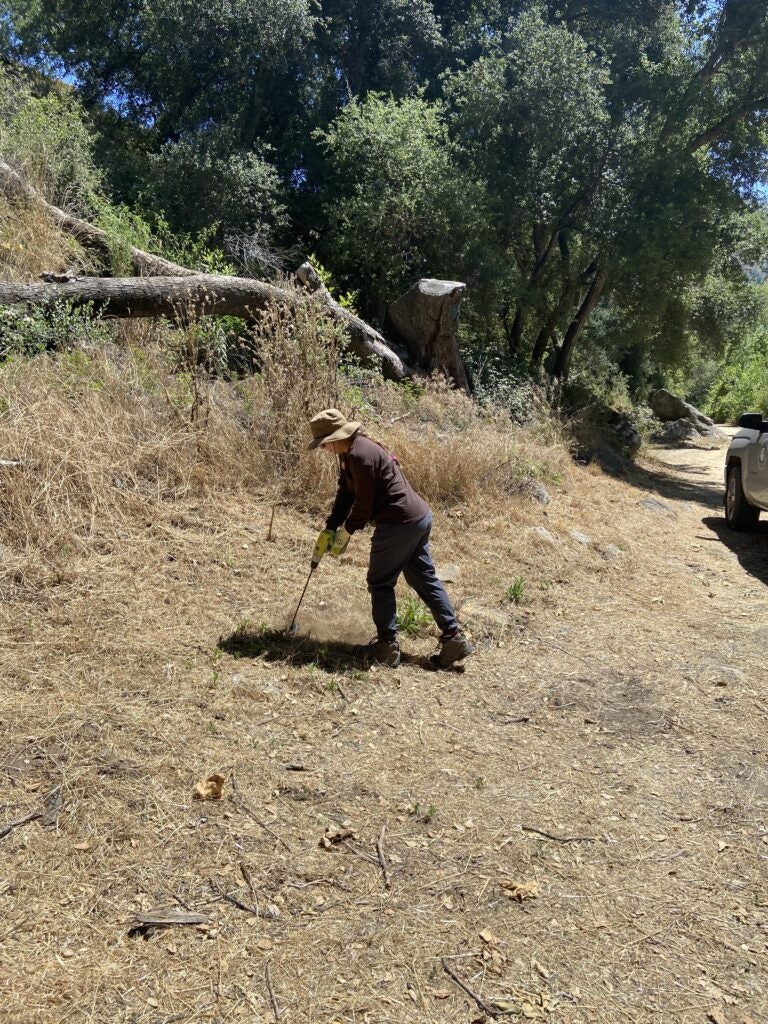
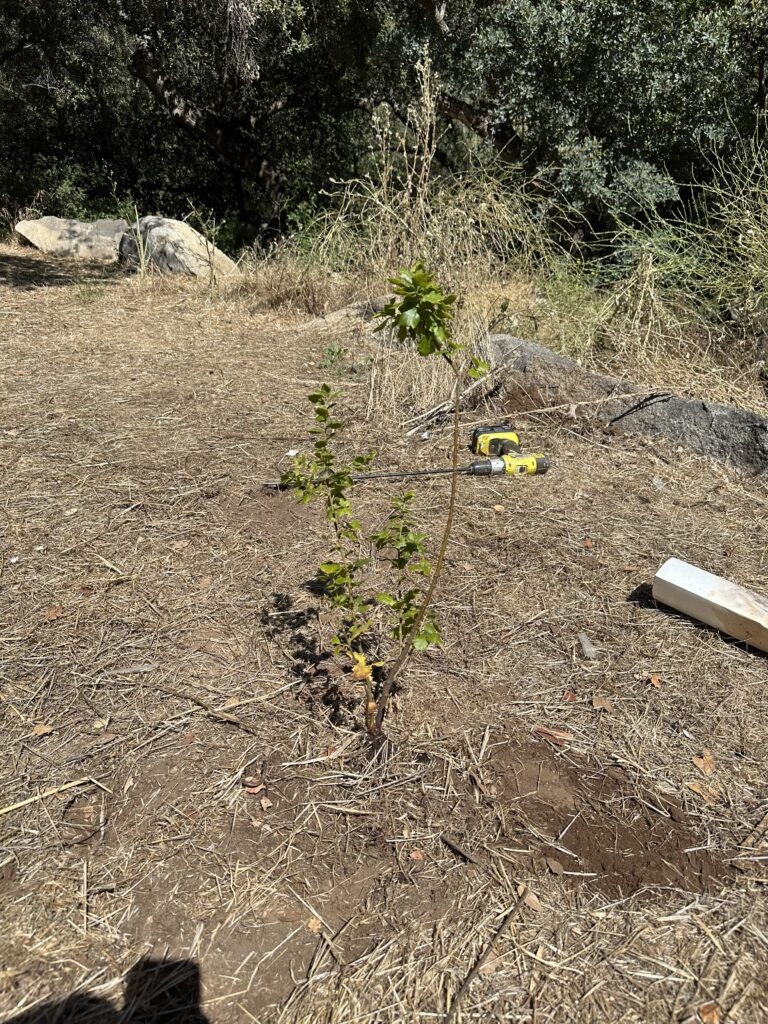




To ensure the highest probability of success for the oak saplings, we set out to find the ideal conditions to plant them. Oak saplings need an equal amount of shade and sunlight, and the team had to ensure the baby trees did not overcrowd other existing oak trees. For each plant, we used an auger and shovels to dig about a foot into the ground and carefully placed the oak trees inside. Once they were planted, we set up a fence and placed a pole to protect them from human disturbance and other wildlife. Within two days, all 50 plants were carefully planted and recorded in a GIS dataset.
Although the survival rate of oak saplings can be low, we are hopeful for a high rate of success as oak trees provide critical habitat to many native species, shade for campers visiting the campground, and are an important cultural resource for the tribe.

Want to learn more?
This is a great article about the history of oak trees and their importance in California ecosystems and to Indigenous peoples.
Learn more about the great work the La Jolla Band is doing and their Indigenous Fire, Forestry, and Fuels crew.
Volunteer! Tree San Diego often has events where community members can get involved in tree planting or outreach events.
Our food system has drastically changed over time - markets now cater to new trends of shopping locally, incorporating regenerative practices on the land, and consumers wanting to know more details about their food. Food production is also shaped by raging wildfires, extreme weather and in recent years a global pandemic, highlighting that our current food system is fragile and could be improved upon.
The popularity of pasture-raised meats is greatly increasing, creating a new market for livestock producers and opening an opportunity to manage land more regeneratively. However, in 2020 grocery store meat sections sat empty. Today, the meat industry is highly centralized to only four companies, including Cargill, Smithfield, Tyson, and JBS, supplying 80% of the nation’s meat. When the pandemic hit, large processing facilities shut down to ensure worker safety, and the supply chain came to a halt. As a result, ranchers were left with livestock to be processed and nowhere to take them.
This distribution within the chain left ranchers jumping through hoops to keep their businesses alive. To adapt they drove longer distances, scheduled processing months in advance without knowing the condition of their product and increased their direct sales to customers. With less than 20 USDA-approved slaughter facilities, it fosters the question of why this bottleneck effect has not been addressed.
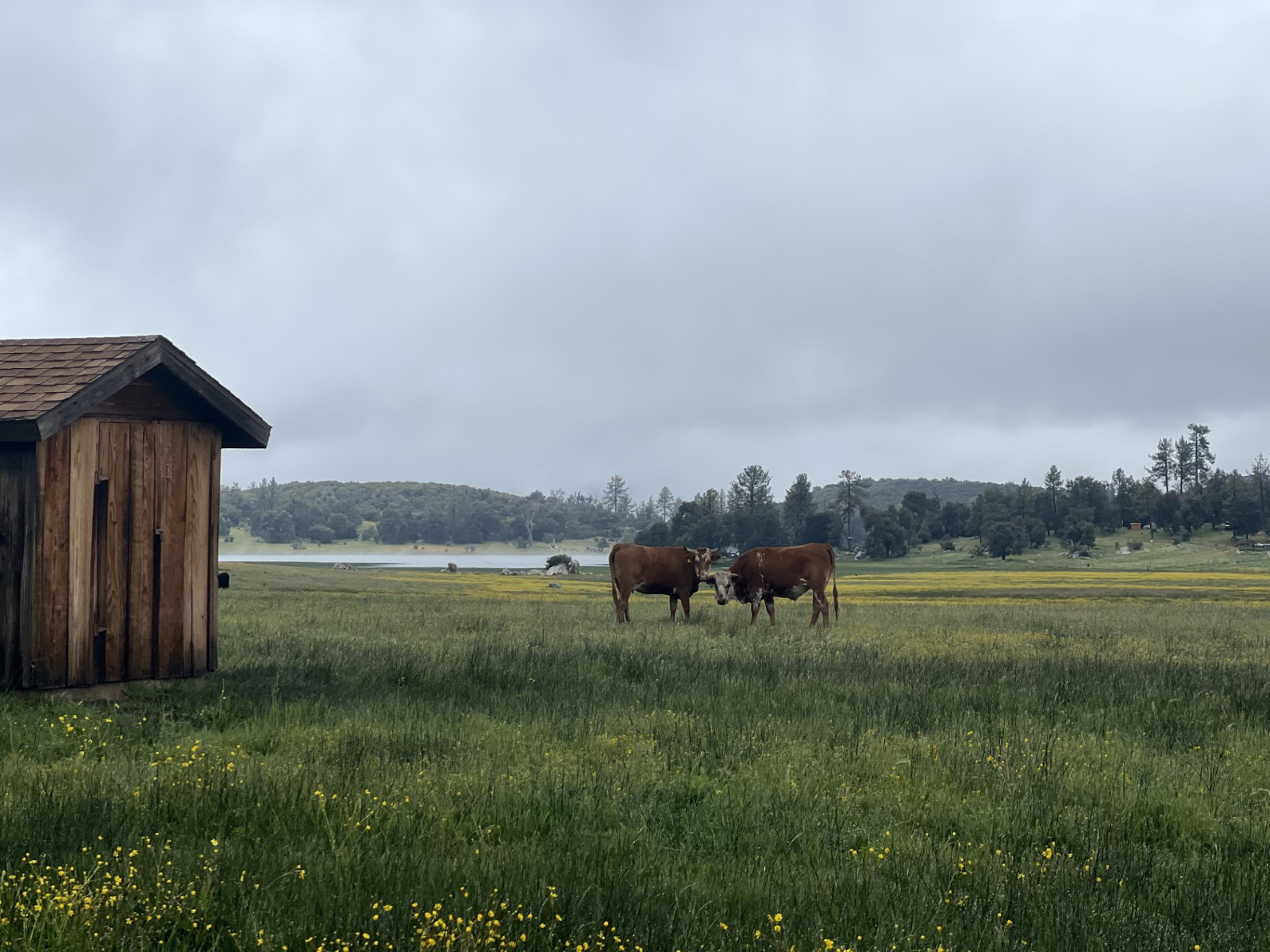
Mobilizing New Opportunities
Now, farmers and ranchers are tackling the task themselves and appealing for mobile meat processing facilities. Although costly, these smaller mobile units can allow for on-farm harvest, reducing the amount of time and distance an animal would have to travel to make it to a processing facility. This alternative approach would benefit ranchers, the communities they serve and most importantly the livestock they dedicate their lives to raising.The Bay Area Ranchers Cooperative pursued this advancement and came together to create their own mobile meat processing facility, which as of last year is currently up and running. The 16 founding ranchers in the Cooperative hope that their vision and implementation serve as a model to other agricultural communities in shaping their local food system.
In July 2022, President Biden signed an executive order for the expansion of the nation’s meat supply chain and $9.6 million in funds were awarded to producers this month. This assistance will support business development, increase producer income stability, create jobs and most importantly expand and diversify the meat processing industry in its entirety. Supporting local meat processing is a chance to improve the fragile infrastructure already put in place, while addressing concerns of wildfire, soil health and drought resilience. Local San Diego County producers and butchers are pursuing funding to replicate a similar approach to their colleagues in the North. We have an opportunity to continue the change within our food system, moving towards a more resilient and supportive model for our ranchers, farmers, consumers, landscapes and the animals that feed us.
To learn more about local meat production please visit:
- San Diego County Cowbelles
- Connect with your local Future Farmers of America chapter to support students raising livestock for their Supervised Agricultural Experience (SAE) projects
- 'Respect the animal' motto for Ramona traveling butcher - Ramona Sentinel
The 30×30 Partnership 2023 Gathering
The 30×30 Partnership 2023 Gathering was an inspiring two-day event, hosted by the California Natural Resource Agency and the California Biodiversity Network. The goal of Executive Order N-82-20, also known as 30×30, is to conserve 30 percent of California’s lands and coastal waters by 2030. With the help and dedication of partners and volunteers throughout the state, there are three main goals: conserve and restore biodiversity, expand access to nature, and mitigate and build resilience to climate change.
The conference began with a tribal blessing and introduction from William Madrigal, Jr. from the Cahuilla Band of Indians. While enrolled in a doctorate degree program at the University of California, Riverside, Professor Madrigal also teaches three out of the four courses of the Cahuilla language at the University. During his speech, he shared the hardships of his relatives being denied admission to colleges for being Native American. One of his relatives decided to forge his own path, continuing his education by receiving a degree in Civil Engineering and eventually helping to build the University of California Riverside, which resides on his ancestral lands. Professor Madrigal said, “Knowing that my ancestors helped build the school on our native land and now I am teaching our language to the future generations. And get this, I am teaching our native language in a foreign language category.”
As the day continued, we learned from conservation leaders, indigenous land stewards, environmental educators, scientists, and local community members from Southern California. Notably, Beth Pratt was one of the presenters who stood out to our team. She has dedicated her career to wildlife conservation and specifically to a very famous mountain lion named P22. P22 quickly gained popularity amongst L.A. locals and captivated the importance of humans living symbiotically with wildlife and their habitat.
What made P-22 especially unique is that he somehow made his way into Griffith Park, the eastern flank of the Santa Monica Mountains, from the western side, crossing two major Los Angeles freeways, the 405 and 101, a feat other lions have died trying to do. His safe passage into and life in the park is a testament to the lack of wild spaces remaining in Los Angeles, however it demonstrated how these wild places are usually not built for wild animals to thrive. As the human population grows, we are occupying increasingly more space which in return encroaches on habitat for other species. Due to urban sprawl and thereby habitat loss, inbreeding, and vehicle/animal collisions, populations of mountain lions began to decline. After more than a decade, the Wallis Annenberg Wildlife crossing was built in hopes of mitigating these issues. The Wildlife Crossing aims to provide a safe place for animals to cross the busy 405 freeway, preserving species diversity in the Santa Monica Mountains. Since the construction of the bridge, scientists have noted an increase of mountain lions and other notable species in the Santa Monica Mountains.
Beth stated, “Find your crazy, build your movement, story tell, and help people connect with those causes.” Here at the RCD of Greater San Diego County, we aim to protect, conserve, and restore our beautiful County. We hope to inspire our community to do the same, and to provide programs and resources such as the Home Assessment Program and Defensible Space Assistance Program, to help you meet these goals. We encourage you to check out San Diego’s local 30×30 initiatives and contribute to the effort!
Resources and to learn more about these topics please visit:
30×30: https://www.californianature.ca.gov/
San Diego 30×30 Efforts: https://www.sandiegonature.org/
William Madrigal Jr.: https://news.ucr.edu/articles/2020/09/18/ucr-offers-first-cahuilla-language-course-uc-system
Beth Pratt: https://www.bethpratt.com/about
P22: https://www.nps.gov/articles/000/puma-profiles-p-22.htm
The Wallis Annenberg Wildlife crossing: https://dailybruin.com/2022/07/17/worlds-largest-wildlife-crossing-begins-construction-in-los-angeles
